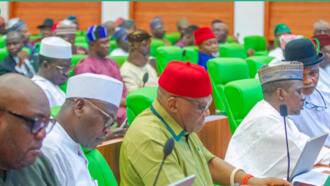Top 10 largest states in Nigeria by land mass: List with details
Nigeria is divided into 36 states and one federal capital territory, which, in turn, are divided into 774 local government areas. Here is a list of Nigeria's top 10 largest states and top facts about each of them. Evans Osabuohien, an Economics Professor at Covenant University, provides insights on how these states can contribute to Nigeria's economic significance, fostering inclusive growth and sustainable development.
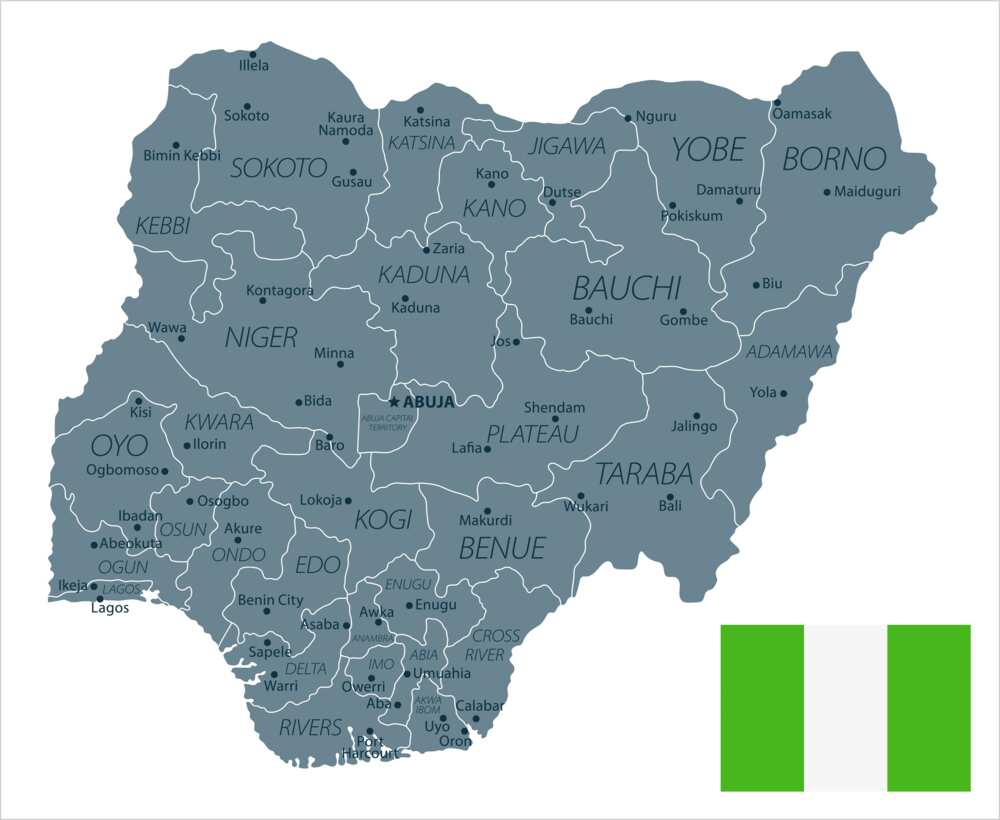
Source: Getty Images
TABLE OF CONTENTS
Nigeria is a vast country in terms of both area and people. With a population of almost 200 million people, it is Africa's most populous country. The following are the 10 biggest states in Nigeria that you should be aware of.
Top 10 largest states in Nigeria
Here is a list of the top ten largest Nigerian states, from smallest to largest.
10. Kebbi State - 36,800 km²
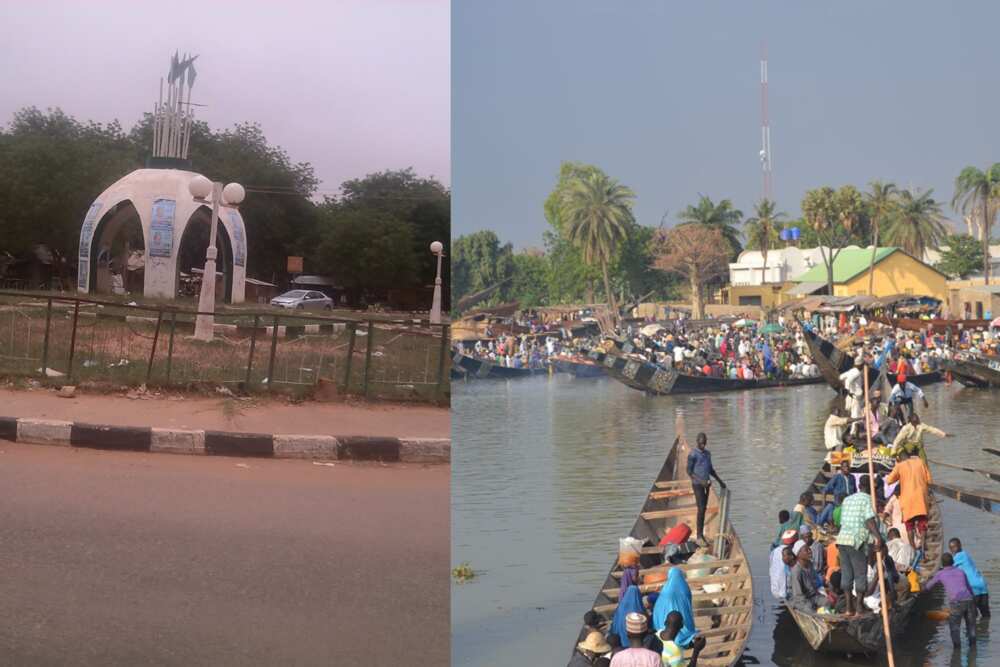
Source: UGC
- Date created: 27 August 1991
- Capital: Birnin Kebbi
- Total area: 36,800 km²
Kebbi State is bordered by Sokoto State, Niger State, Zamfara State, Dosso Region in the Republic of Niger and the nation of Benin.
It has 21 Local Government Areas. They include: Aleiro, Arewa Dandi, Argungu, Augie, Bagudo, Birnin Kebbi, Bunza, Dandi, Fakai, Gwandu, Jega, Kalgo, Koko/Besse, Maiyama, Ngaski, Sakaba, Shanga, Suru, Danko/Wasagu, Yauri, Zuru.
Kebbi is the tenth largest state in the region and the 22nd most populous, with an estimated population of 4.4 million people in 2016. It is known as the "Equity Land."
9. Kwara State - 36,825 km²
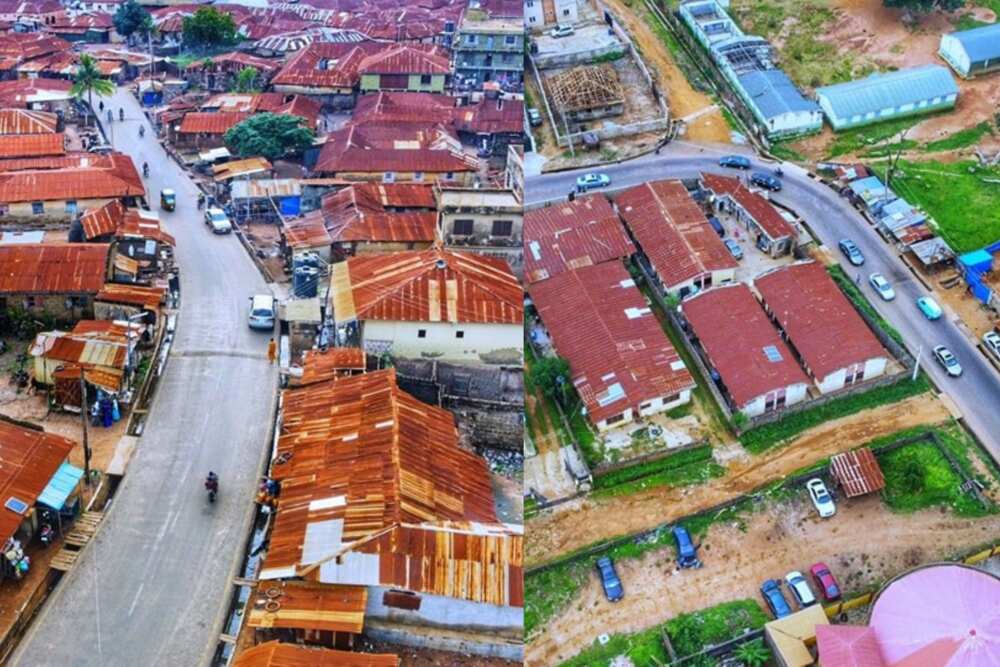
Source: UGC
- Date created: 27 May 1967
- Capital: Ilorin
- Total area: 36,825 km²
Kwara is located within the North Central geopolitical zone, commonly referred to as the Middle Belt. It has 16 Local Government Areas. They include Asa, Baruten, Edu, Ekiti, Ifelodun, Ilorin East, Ilorin South, Ilorin West, Irepodun, Isin, Kaiama, Moro, Offa, Oke Ero, Oyun, and Pategi.
Kwara is the sixth-least populous state, with an estimated population of 3.2 million people in 2016. Geographically, it is divided into two ecoregions: the West Sudanian savanna to the east and the Guinean forest-savanna mosaic ecoregion to the west.
8. Adamawa State - 36,917 km²
- Date created: 27 August 1991
- Capital: Yola
- Total area: 36,917 km²
The Borno borders Adamawa State on the northwest, Gombe on the west, and Taraba on the southwest. Its eastern border forms the national eastern border with Cameroon.
It has 21 Local Government Areas. They include: Demsa, Fufore, Ganye, Girei, Gombi, Guyuk, Hong, Jada, Lamurde, Madagali, Maiha, Mayo-Belwa, Michika, Mubi North, Mubi South, Numan, Shelleng, Song, Toungo, Yola North, and Yola South.
Adamawa is the thirteenth least populated in population, with an estimated 4.25 million residents as of 2016. It also has a diverse religious community, with roughly 55% Sunni Muslims, 30% Christians, and 15% followers of traditional ethnic religions.
7. Zamfara State - 39,762 km²
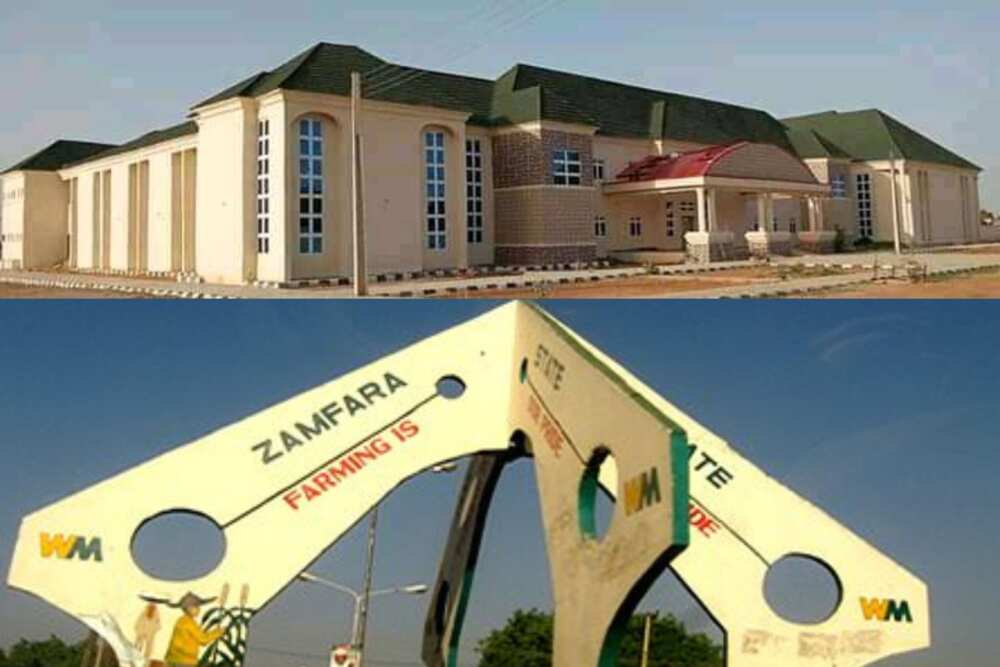
Source: UGC
- Date created: 1 October 1996
- Capital: Gusau
- Total area: 39,762 km²
Zamfara is a state in northwestern Nigeria with a predominantly Hausa and Fulani population. It has fourteen Local Government Areas. They include: Anka, Bakura, Birnin Magaji/Kiyaw, Bukkuyum, Bungudu, Tsafe, Gummi, Gusau, Kaura Namoda, Maradun, Maru, Shinkafi, Talata Mafara, and Zurmi.
It has a population of 9,278,873, according to the 2006 census. The state's primary industries and main sources of revenue are agriculture and gold mining. More than 80% of the population works in agriculture.
6. Yobe State - 45,502 km²
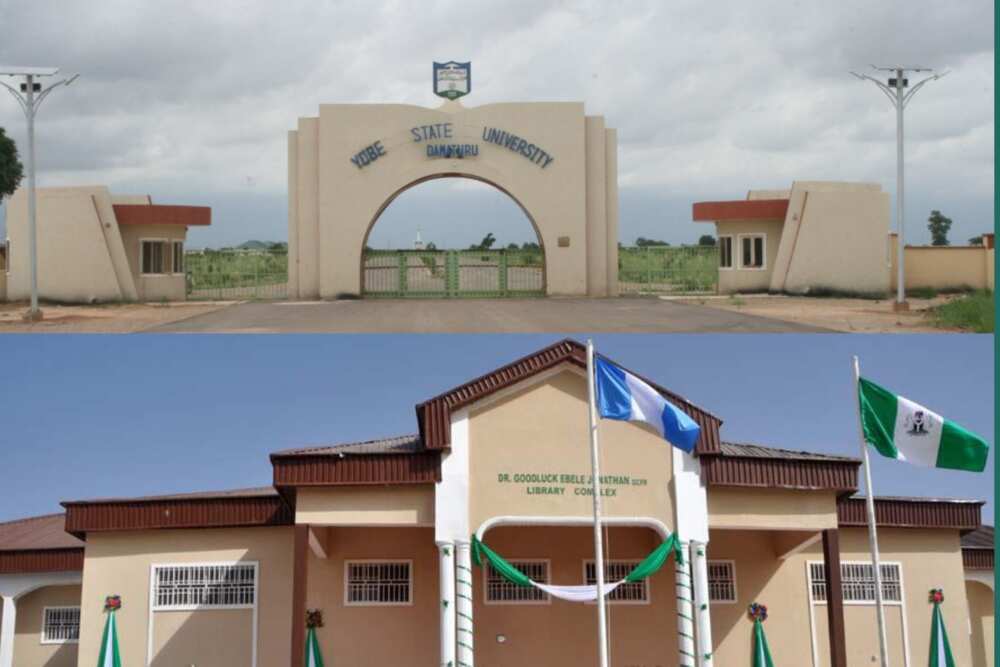
Source: UGC
- Date created: 27 August 1991
- Capital: Damaturu
- Total area: 45,502 km²
Yobe State borders four states: Bauchi, Borno, Gombe, and Jigawa State. In addition, it borders the Diffa Region and the Zinder Region to the north of the Republic of Niger.
It has seventeen Local Government Areas. They include: Bade, Bursari, Damaturu, Geidam, Gujba, Gulani, Fika, Fune, Jakusko, Karasuwa, Machina, Nangere, Nguru, Potiskum, Tarmuwa, Yunusari, and Yusufari.
Yobe is a state that is both rich in mineral reserves like gypsum and kaolin and is also an agricultural state. Groundnuts, beans, cotton, gum arabic, and gum arabic are among the state's agricultural products.
5. Bauchi State - 45,893 km²

Source: UGC
- Date created: 3 February 1976
- Capital: Bauchi
- Total area: 45,893 km²
The state is bordered by seven states: Kano and Jigawa on the north, Taraba and Plateau on the south, Gombe and Yobe on the east, and Kaduna on the west.
It has twenty Local Government Areas. They include: Bauchi, Tafawa Balewa, Dass, Toro, Bogoro, Ningi, Warji, Ganjuwa, Kirfi, Alkaleri, Darazo, Misau, Giade, Shira, Jama'are, Katagum, Itas/Gadau, Zaki, Gamawa, and Damban.
According to 2016 estimates, the population of Bauchi State was over 6,530,000, making it the ninth most populous country. Livestock and crops like tomatoes, yams, cotton, groundnuts, and millet are a part of its economy.

Read also
Omokri lays into Oba of Benin’s critics as first-class monarch says Binis founded nucleus of Lagos
4. Kaduna State - 46,053 km²
- Date created: 27 May 1967
- Capital: Kaduna
- Total area: 46,053 km²
Kaduna State is a state in northern Nigeria. It is the third most populous state in the country, with numerous educational institutions of importance, such as Ahmadu Bello University.
It has twenty-three Local Government Areas. They include: Birnin Gwari, Chikun, Giwa, Igabi, Ikara, Jaba, Jema'a, Kachia, Kaduna North, Kaduna South, Kagarko, Kajuru, Kaura, Kauru, Kubau, Kudan, Lere, Makarfi, Sabon Gari, Sanga, Soba, Zangon Kataf, and Zaria.
3. Taraba State - 54,473 km²
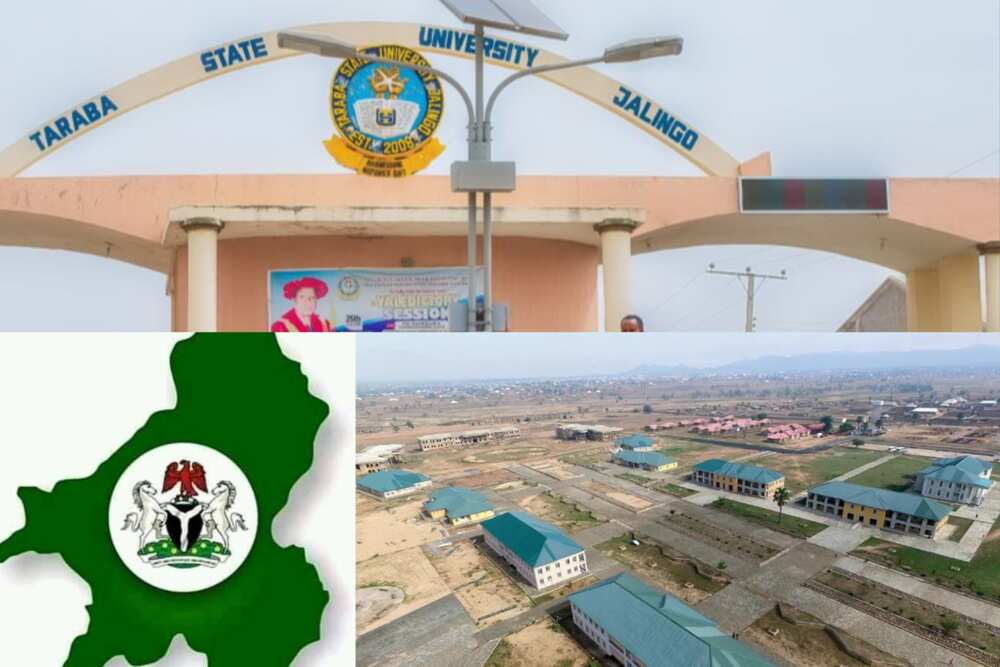
Source: UGC
- Date created: 27 August 1991
- Capital: Jalingo
- Total area: 54,473 km²
Taraba State is bordered in the west by Nasarawa State and Benue State, in the northwest by Plateau State, in the north by Bauchi State and Gombe State, in the northeast by Adamawa State, in the east and south by Cameroon.
It has sixteen Local Government Areas. They include: Ardo Kola, Bali, Donga, Gashaka, Gassol, Ibi, Jalingo, Karim Lamido, Kurmi, Lau, Sardauna, Takum, Ussa, Wukari, Yorro, and Zing.
2. Borno State - 70,898 km²
- Date created: 3 February 1976
- Capital: Maiduguri
- Total area: 70,898 km²
Borno is the second biggest state in Nigeria. It has twenty-seven Local Government Areas. They include: Maiduguri, Ngala, Kala/Balge, Mafa, Konduga, Bama, Jere, Dikwa, Askira/Uba, Bayo, Biu, Chibok, Damboa, Gwoza, Hawul, Kwaya Kusar, Shani, Abadam, Gubio, Guzamala, Kaga, Kukawa, Magumeri, Marte, Mobbar, Monguno, and Nganzai.
As of 2016, the state's population was predicted to be 5.86 million, making it the ninth most populated state. In Borno State, many people practise Islam, and an equal number practise Christianity and other religions.
1. Niger State - 76,363 km²
- Date created: 3 February 1976
- Capital: Minna
- Total area: 76,363 km²
Which state is the largest state in Nigeria? Niger is the largest state in the country. It is located in the country's north-central area and has three political zones: A, B and C.
It has twenty-five Local Government Areas. They include Agaie, Agwara, Bida, Borgu, Bosso, Chanchaga, Edati, Gbako, Gurara, Katcha, Kontagora, Lapai, Lavun, Magama, Mariga, Mashegu, Mokwa, Munya, Paikoro, Rafi, Rijau, Shiroro, Suleja, Tafa, and Wushishi.
During a discussion with Evans Osabuohien, an Economics Professor at Covenant University and a seasoned researcher, he emphasised that effectively channeling land, as an economic resource, into productive use is crucial for ensuring the prosperity of the state.
A state with a large landmass does not determine if it will be more economically productive than others (those with a small landmass), for example, Lagos State is the smallest in the country, yet it has the largest economic prowess. If you look at the top ten largest states by landmass in Nigeria, not many of them are among the top ten states in terms of GDP (gross domestic product) or economic prowess or empowerment.
A state that has such a large landmass should be able to attract some productive activities in its mining and quarrying and maybe have a space for real estate development. But how that is determined depends on the kind of incentives and economic atmosphere created by the state to attract such investment.
In addressing the management and equal balance of rural and urban development in these states, Professor Evans emphasised the importance for state governments to prioritise inclusive growth. He suggested the implementation of a deliberate plan to ensure that every region of the state actively participates in the growth process.
For example, a state that has a road network connecting urban to rural areas will be better in terms of transporting the produce from the rural areas to the urban areas. And also, the input from the urban areas is supplied to the rural areas.
Much more so, another point is that a state that has some level of amenities, such as power supply and electricity in almost every part of the state, will invariably have easy distribution across every part of the state because everybody can stay anywhere and still enjoy a little bit of comfort without going to the urban areas compared to a state where their activities are only at the centre, which will create another crisis: the popular rural-urban migration and the issue of urbanisation and overpopulation in the urban areas.

Read also
"One gets N500K:" Governor applauds as Foundation donates N250 million poverty alleviation in Kwara
In summary, there should be a deliberate way to balance the whole process, and that can be done through the use of incentive infrastructure so that economic actors can stay anywhere in the state and still have access to basic amenities and contribute his or her quota to the growth process. In that way, the growth of that state can be much more inclusive than in other states that don’t make such deliberate attempts.
Professor Evans also recommended that the federal government has devised strategies capable of unlocking the full potential of states for sustainable growth. Among the strategies he highlighted are:
- Operation Feed the Nation (OFN)
- Back to Farm policy
- Better Life for Rural Women
- The Directorate of Food, Roads, and Rural Infrastructure (DFRRI)
- FADAMA (this is a Northern Nigerian dialect that means irrigable lowland launched in 1992 by the federal government)
- The Green Alternatives
- The Agricultural Transformation Agenda (ATA)
- National Economic Empowerment and Development Strategy (NEEDS)
He emphasized that some of these strategies should be "reactivated" to ensure their proper implementation, clarifying that:
One of the ways land becomes effective is through the use of agriculture and real estate. When there is a backward-and-forward linkage between the rural and urban communities, there will be more elements of inclusive growth, distribution, and much more. Everyone can stay anywhere and contribute because, wherever they are, they will have what is needed to contribute.
For example, the Chinese economy has made available basic amenities in the areas where production (like buttons) take place can focus on their productive activities and those who need to buy the buttons can purchase from them with ease; thus, reduce the cost of production and eventual average cost. So the input comes to you, and the output goes from you. If we have that in place (such as in Nigeria), farmers or those involved in the agricultural sector can focus on their core and leave the issue of marketing, distribution, branding, and packaging to the value chain; this could be one way to ensure equitable growth.
Which are the 36 Nigerian states by land mass?
Below is a table of the states in Nigeria, ranked from the largest state to the smallest.
| State | Capital | Total area in km² |
| Niger State | Minna | 76,363 |
| Borno State | Maiduguri | 70,898 |
| Taraba State | Jalingo | 54,473 |
| Kaduna State | Kaduna | 15,053 |
| Bauchi State | Bauchi | 45,893 |
| Yobe State | Damaturu | 45,502 |
| Zamfara State | Gusau | 39,762 |
| Adamawa State | Yola | 36,917 |
| Kwara State | Ilorin | 36,825 |
| Kebbi State | Birnin Kebbi | 36,800 |
| Benue State | Makurdi | 34,059 |
| Plateau State | Jos | 30,913 |
| Kogi State | Lokoja | 29,833 |
| Oyo State | Ibadan | 28,454 |
| Nasarawa State | Lafia | 27,117 |
| Sokoto State | Sokoto | 25,973 |
| Katsina State | Katsina | 24,192 |
| Jigawa State | Dutse | 23,154 |
| Cross River State | Calabar | 20,156 |
| Kano State | Kano | 20,131 |
| Gombe State | Gombe | 18,768 |
| Edo State | Benin City | 17,802 |
| Delta State | Asaba | 17,698 |
| Ogun State | Abeokuta | 16,762 |
| Ondo State | Akure | 15,500 |
| Rivers State | Port Harcourt | 11,077 |
| Bayelsa State | Yenagoa | 10,773 |
| Osun State | Osogbo | 9,251 |
| Enugu State | Enugu | 7,161 |
Below is a table of the states in Nigeria.
| State | Capital | Total area in km² |
| Akwa Ibom State | Uyo | 7,081 |
| Ekiti State | Ado-Ekiti | 6,353 |
| Abia State | Umuahia | 6,320 |
| Ebonyi State | Abakaliki | 5,670 |
| Imo State | Owerri | 5,530 |
| Anambra State | Awka | 4,844 |
| Lagos State | Ikeja | 3,345 |
Which state is the smallest in Nigeria?
Lagos is Nigeria's smallest state, with only 3,345 square kilometres. With a population of 9,013,534, it is one of the most populous localities. The state is located in the southwest geopolitical region of Nigeria. Waterbodies cover over a quarter of the state's land area, with lagoons, creeks, and rivers dominating.
Each of the top ten largest states in Nigeria by land mass is distinguished by geography, culture and population. They are also subdivided into various Local Government Areas.
READ ALSO: How many international airports are in Nigeria: List with locations
A list of Nigeria's international airports and locations was recently published on Legit.ng. The Federal Airports Authority of Nigeria (FAAN) manages a number of airports in Nigeria.
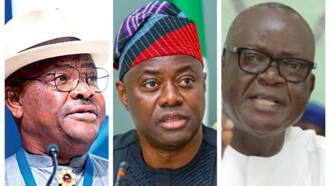
Read also
PDP crisis officially renewed as Ayu, Wike, Ortom, Makinde, others boycott unveiling of campaign council
It also has a lot of airfields and runways. Most of them are owned by the Nigerian military and a few oil companies. Find out which airport is closest to you if you have a trip planned soon.
Source: Legit.ng




